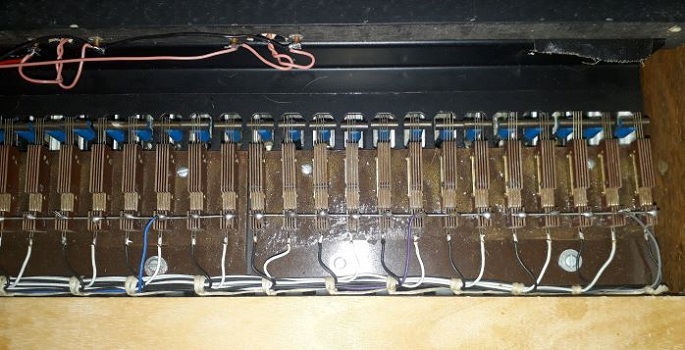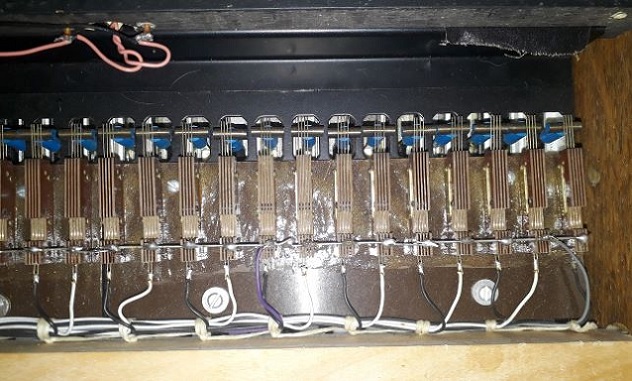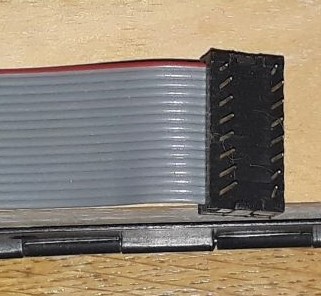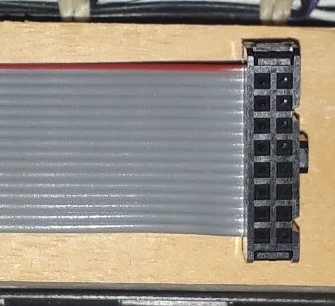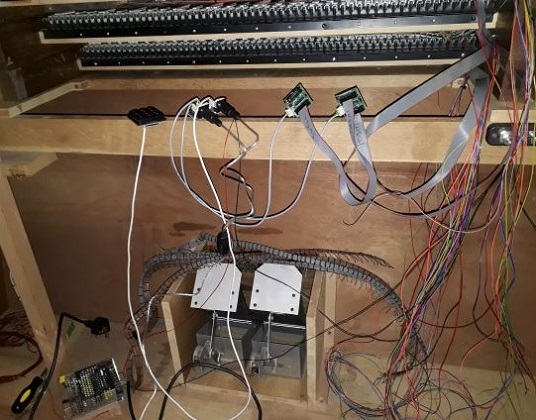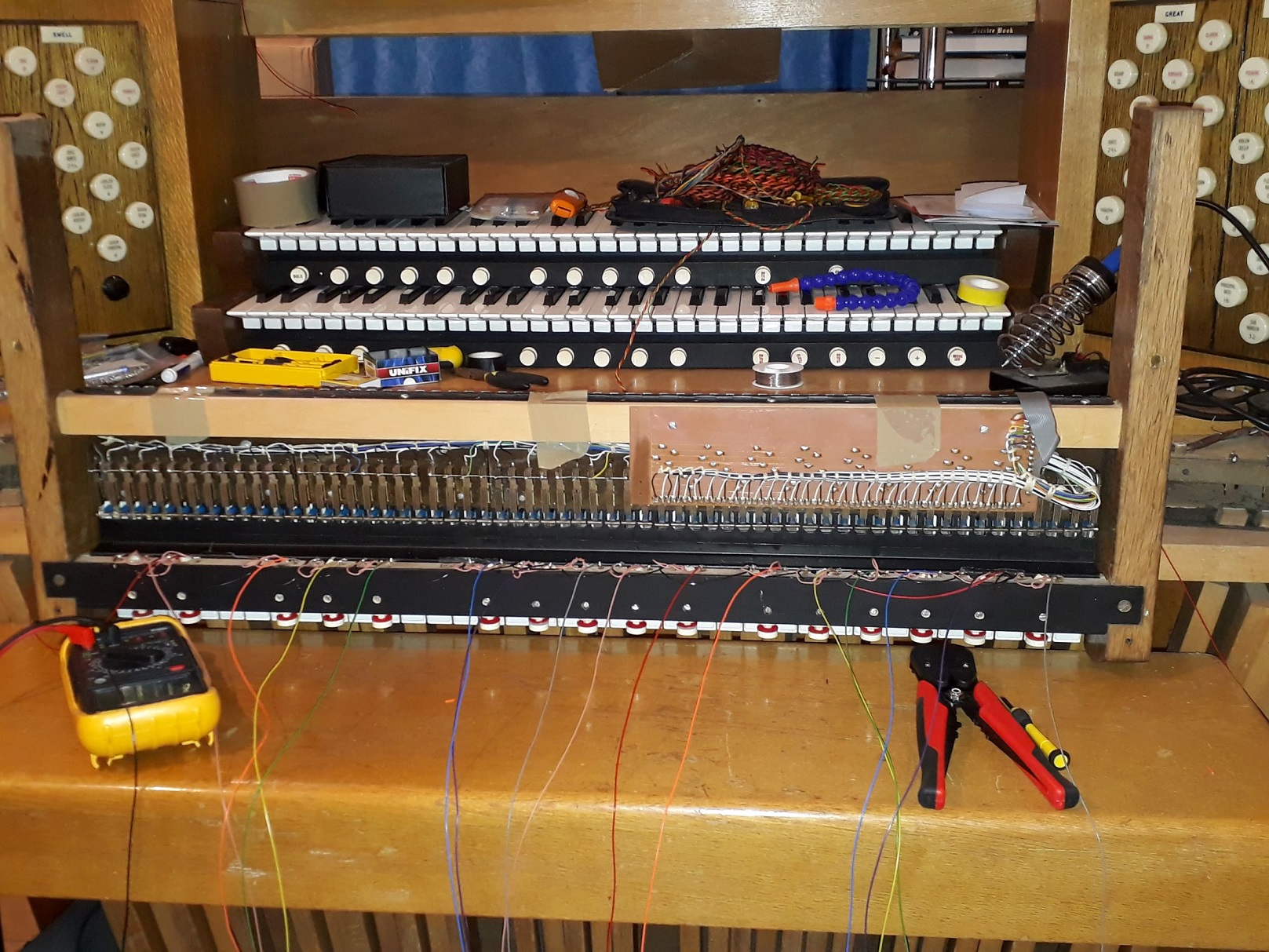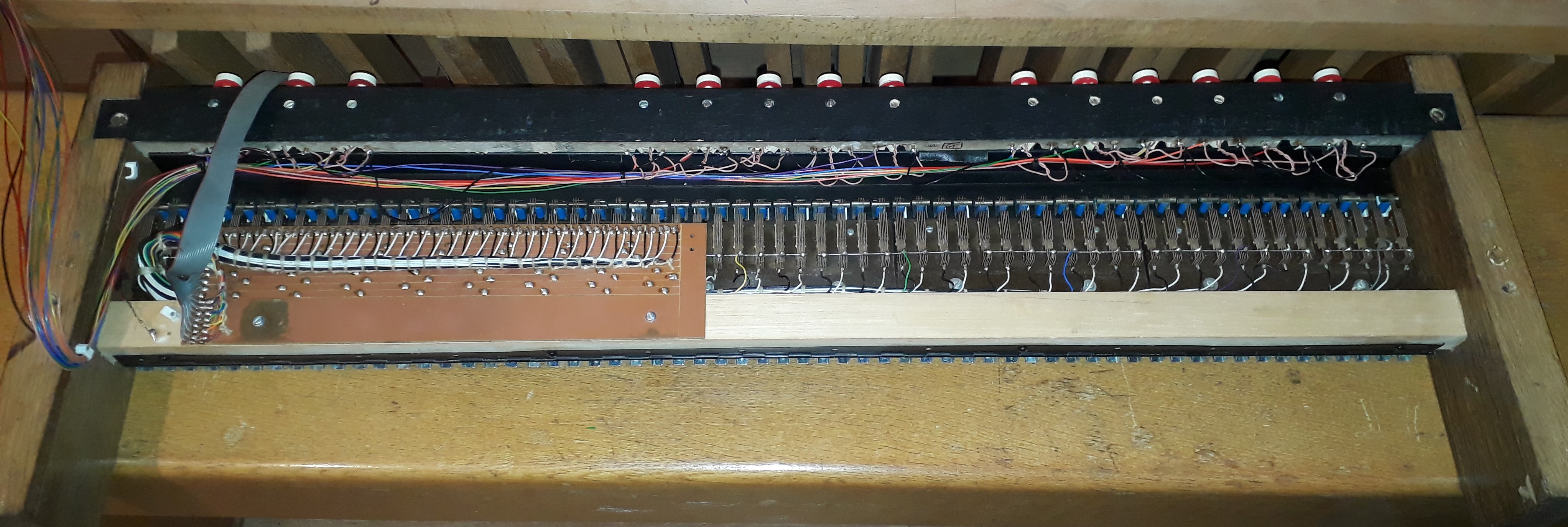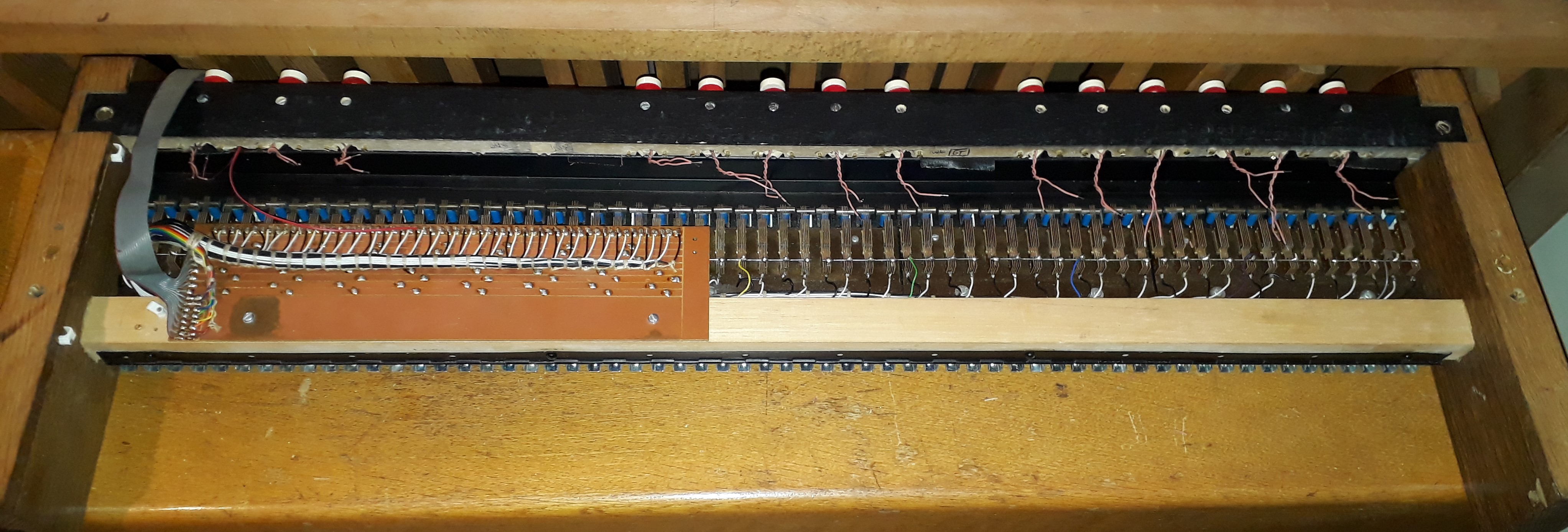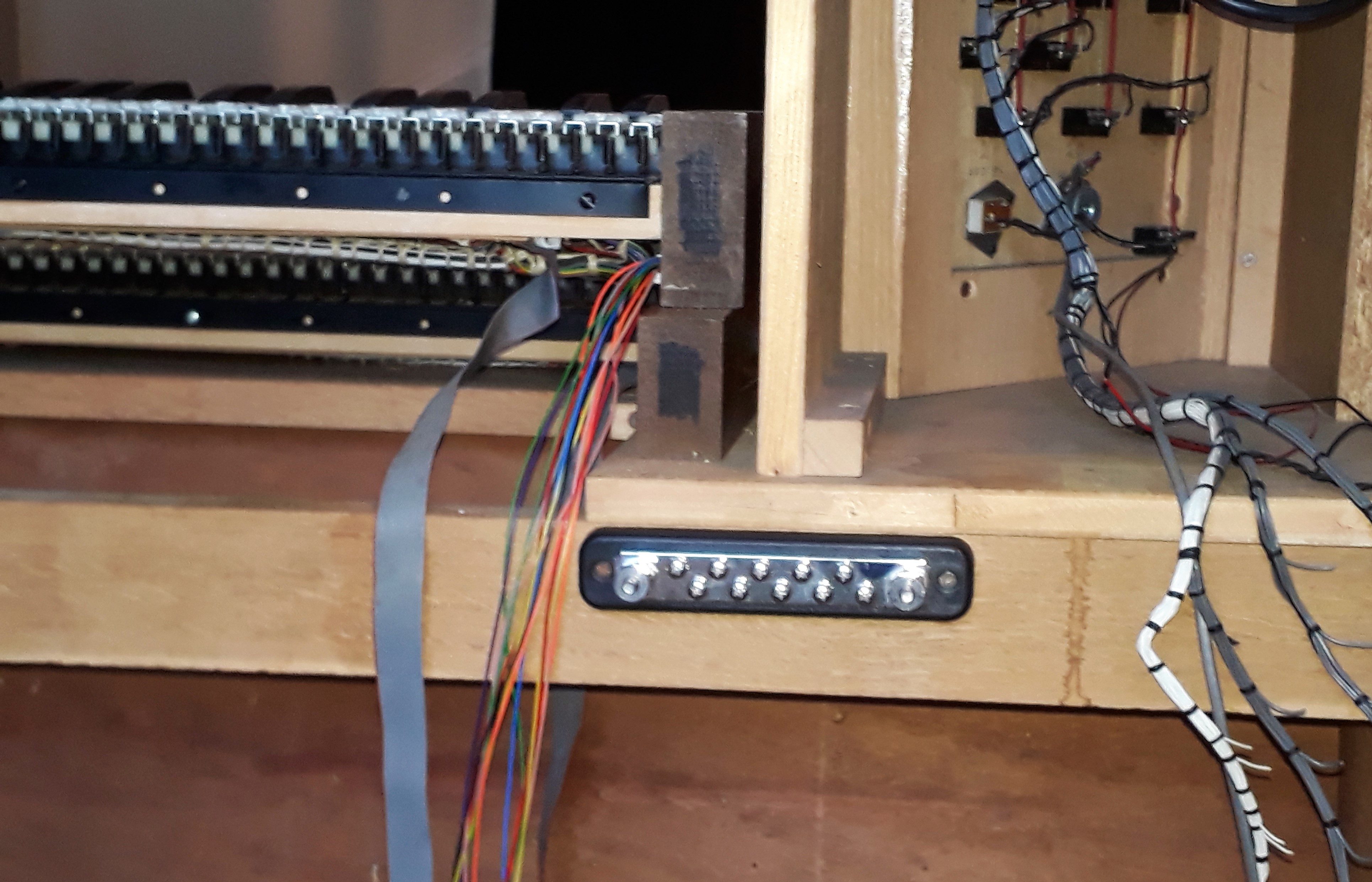Well, more-or-less. All bar tacking down the ribbon cable of the swell manual, anyway. And at some point I will probably build replacement diode matrices. But for now, it is done.
I needed to convert the bus-bar from banks of 5 8 8 8 8 8 8 8 to 8 8 8 8 8 8 8 5, as seen here:
And also to replace the old plug:
And then re-wire the ribbon cable in a very peculiar way (not pictured, because it hurts to look at).
Nevertheless, I now have three manuals that all send the correct MIDI messages on the correct channels. Next major job is to wire up the pistons, but first I need to make sense of the entropy at the back of the organ:
